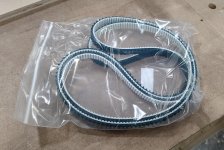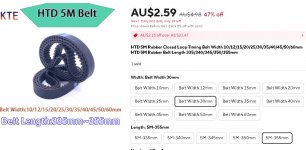Muttley000 said:
...
Parts suppliers are very willing to give special part numbers so google doesn’t lead to a cheap replacement.
...
I would argue it is not so much about "cheap" but about "unqualified for the machine" replacements.
I was for some time intimate with the 3D printers business (Prusa) and it was a complete mess. They have to test&measure
every single shipment of bearings and rods and MATCH them for reliable manufacturing. Different batches
from the same maker can casually have minute differences. While still within a "spec" this means the components would just not work together well if both deviate in the "wrong" direction. Sure, you can order items to about 2x higher spec at 10x the cost - if at all (!).
The issue is that if you spec a "standard part" as a spare part, people
will put a bottom-of-the-barrel $5 "standard" belt, that is not-all-that-standard, into a $100k machine which then breaks (the machine, not the belt). And
the machine maker has a problem. Not Mr. Bezos, nor the belt maker.
If your machine is sufficiently robust to handle semi-standard parts. Great. Many/most common machines are. But in reality most manufacturers of bespoke stuff simply
do not know if they are as robust. Testing costs a lot of $$ which is just not economical to do for a few tens/hundreds machine runs. They are often lucky to find a parts-combination that works reliably in the first place.
---
For a Festool example.
Not sure how many folks took apart a TS/TSC 55 series saw. It includes an ISO "standard" main bearing. Right? NOPE!
The main bearing in these saws is custom-manufactured to tolerances for which there is not even a (public) standard specified. So while they are marked with the ISO standard type label, they cannot be replaced with an "ISO" standard bearing of any type.
And this continues.
I also have an el-cheapo €60 Parkside/Lidl tracksaw which is mostly a clone of the TS 55. Guess what, it comes with a main bearing - of the same type as TS 55 - which is still "tighter" than the highest quality ISO nomenclature can even specify.
How I know? The Parkside was vibrating .. I tried to get a "high accuracy" bearing of the type and got one for a lot of € (more than the Festool spare part) which was in reality
worse than the original Chinese one. Eventually I replaced the bearing with a Festool one and the vibrations went away ...
So much for "standard" parts ..


